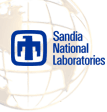Power Electronics
In general terms, Power electronics refers to switching devices that control and convert electrical power flow from one form to another, according to a user’s need. “Convert,” in power electronics, describes the process of changing power from one form to another. The piece of hardware that performs this process is generally called a “converter.” Converters can perform the following processes/conversions (each process/conversion is referred to with a commonly used name):
| Conversion |
Common Names |
| AC-to-DC |
rectifier |
| DC-to-AC* |
inverter |
DC-to-DC
|
boost, buck, buck-boost, chopper, etc. |
| AC-to-AC |
cycloconverters |
*The most common type of conversion is DC-to-AC (inversion); e.g., converting DC power from a storage device into AC power for use by a utility grid or other end-user.
Performing conversions requires some essential hardware:
- A control system,
- Semiconductor switches,
- Thermal management devices,
- Protection devices,
- Magnetics such as transformers and filters,
- DC and AC disconnects, and
- Enclosures.
This group of hardware is referred to as the power conversion system (PCS).
Back to top
Power Conversion System (PCS)
The PCS is a vital part of all energy storage systems. It interfaces energy storage, the energy storage device, and the load (the end-user). PCS costs are significant and can be greater than 25% of the overall storage system. PCS costs range from $100/kW for uninterruptible power supply (UPS) markets to $1200/kW for standalone markets. Some of the major PCS markets include:
- Motor drives
- Power supplies
- UPS,
- Electric vehicles, and
- Inverters/converters for solar hybrid systems, micro-turbines, fuel cells, & wind turbines.
However, PCS technology has been evolving slowly, due to the limited DER market. As a result, PCS costs have been high, with low profit margins; and the manufacturing volume has lowered, which has impacted reliability and quality of the PCS designs.
PCS needs a significant reduction in overall cost, with improved reliability, and development of state-of-the-art, multiple-use systems. This would increase production volumes for DER applications, improve controls and adaptability, and improve manufacturing
DOE Energy Storage Systems Program Involvement
Sandia represents the DOE Energy Storage Systems Program (DOE/ESS) and collaborates with the DOE Power Electronics Program in partnerships with industry and educational institutions to develop state-of-the-art PCS.
DOE/ESS goals include lower cost, increased reliability, improved control philosophy, better integration to energy storage devices, and more efficient packaging and manufacturing for the PCS.
Efforts by the DOE/ESS are instrumental in providing benefits for all energy users and helping to secure our nation’s energy supply.
Back to top
Current PCS projects include:
| Project |
Description |
Partner(s) |
| An Advanced Power Converter System Using High Temperature, High Power Density SiC Devices |
A SiC inverter capable of working at high power densities, high temps, & high frequencies; thus achieving high efficiency, small size, and light weight. |
Aegis Technology, Inc. |
| High Power Density (100 kW), Silicon Carbide (SiC), Three-Phase Inverters |
The overall objective is to develop high efficiency, compact silicon, carbide (SiC) power converters capable of operating at high junction temperatures. |
Arkansas Power Electronics, Inc. (APEI) |
| Large Area, Silicon Carbide, GTO Thyristor Development |
Achieve the following from a SiC-based GTO Thyristor:
- Blocking Voltage > 10-16 kV
- Packaged device on-state Current > 100 A
- Switching frequency > 20 kHz
- Cost effective solution that can be deployed on a large scale
|
GeneSic Semiconductor, Inc. |
| Development and Validation of Advanced Energy Management Control Algorithms for Short - or Long- term Energy Storage |
Using current test-bed that mimics the electric power grid, develop the basis for a plug-and-play microgrid. |
Missouri Univ. of Science &Technology, Rolla MO |
| Advanced Power Devices and Converters |
Development of the Gen-4 Light-Triggered Emitter Turn-Off Thyristor. |
No. Carolina State Univ. |
| Scale Model Demonstration of Storage in Customer-driven Microgrids |
Demonstration of the integration of storage-based or storage-supported distributed generation in electricity distribution systems. |
New Mexico State Univ. |
| High Temperature, Fully Programmable, Power Controller for High Density Power Electronics |
Design and development of a high temperature controller that interfaces the High-Temperature Silicon-On-Insulator (HT SOI)- based controller to Silicon-Carbide (SiC) power switches. |
SJT Micropower |
| Power Electronics Reliability |
Sandia National Laboratories is initiating a reliability project to better understand the current and future reliability of power electronics. |
Sandia National Laboratories |
Back to top

